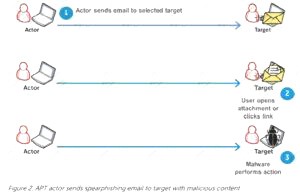Boney, a professional hacker, targets an organization for financial benefits. He performs an attack by sending his session ID using an MITM attack technique. Boney first obtains a valid session ID by logging into a service and later feeds the same session 10 to the target employee. The session ID links the target employee to Boneys account page without disclosing any information to the victim. When the target employee clicks on the link, all the sensitive payment details entered in a form are linked to Boneys account. What is the attack performed by Boney in the above scenario?
Correct Answer:
A
In a session donation attack, the attacker donates their own session ID to the target user. In this attack, the attacker first obtains a valid session ID by logging into a service and later feeds the same session ID to the target user. This session ID links a target user to the attacker's account page without disclosing any information to the victim. When the target user clicks on the link and enters the details (username, password, payment details, etc.) in a form, the entered details are linked to the attacker's account. To initiate this attack, the attacker can send their session ID using techniques such as cross-site cooking, an MITM attack, and session fixation. A session donation attack involves the following steps.
Harry. a professional hacker, targets the IT infrastructure of an organization. After preparing for the attack, he attempts to enter the target network using techniques such as sending spear-phishing emails and exploiting vulnerabilities on publicly available servers. Using these techniques, he successfully deployed malware on the target system to establish an outbound connection. What is the APT lifecycle phase that Harry is currently executing?
Correct Answer:
D
After the attacker completes preparations, subsequent step is an effort to realize an edge within the target’s environment. a particularly common entry tactic is that the use of spearphishing emails containing an internet link or attachment. Email links usually cause sites where the target’s browser and related software are subjected to varied exploit techniques or where the APT actors plan to social engineer information from the victim which will be used later. If a successful exploit takes place, it installs an initial malware payload on the victim’s computer. Figure 2 illustrates an example of a spearphishing email that contains an attachment. Attachments are usually executable malware, a zipper or other archive containing malware, or a malicious Office or Adobe PDF (Portable Document Format) document that exploits vulnerabilities within the victim’s applications to ultimately execute malware on the victim’s computer. Once the user has opened a malicious file using vulnerable software, malware is executing on the target system. These phishing emails are often very convincing and difficult to differentiate from legitimate email messages. Tactics to extend their believability include modifying legitimate documents from or associated with the organization. Documents are sometimes stolen from the organization or their collaborators during previous exploitation operations. Actors modify the documents by adding exploits and malicious code then send them to the victims. Phishing emails are commonly sent through previously compromised email servers, email accounts at organizations associated with the target or public email services. Emails also can be sent through mail relays with modified email headers to form the messages appear to possess originated from legitimate sources. Exploitation of vulnerabilities on public-facing servers is another favorite technique of some APT groups. Though this will be accomplished using exploits for known vulnerabilities, 0-days are often developed or purchased to be used in intrusions as required .
Gaining an edge within the target environment is that the primary goal of the initial intrusion. Once a system is exploited, the attacker usually places malware on the compromised system and uses it as a jump point or proxy for further actions. Malware placed during the initial intrusion phase is usually an easy downloader, basic Remote Access Trojan or an easy shell. Figure 3 illustrates a newly infected system initiating an outbound connection to notify the APT actor that the initial intrusion attempt was successful which it’s able to accept commands.
Which of the following is an extremely common IDS evasion technique in the web world?
Correct Answer:
C
A penetration tester is conducting a port scan on a specific host. The tester found several ports opened that were confusing in concluding the Operating System (OS) version installed. Considering that NMAP result below, which of the following is likely to be installed on the target machine by the OS? Starting NMAP 5.21 at 2011-03-15 11:06 NMAP scan report for 172.16.40.65 Host is up (1.00s latency). Not shown: 993 closed ports PORT STATE SERVICE 21/tcp open ftp 23/tcp open telnet 80/tcp open http 139/tcp open netbios-ssn 515/tcp open 631/tcp open ipp 9100/tcp open MAC Address: 00:00:48:0D:EE:8
Correct Answer:
B
______ is a tool that can hide processes from the process list, can hide files, registry entries, and intercept keystrokes.
Correct Answer:
B